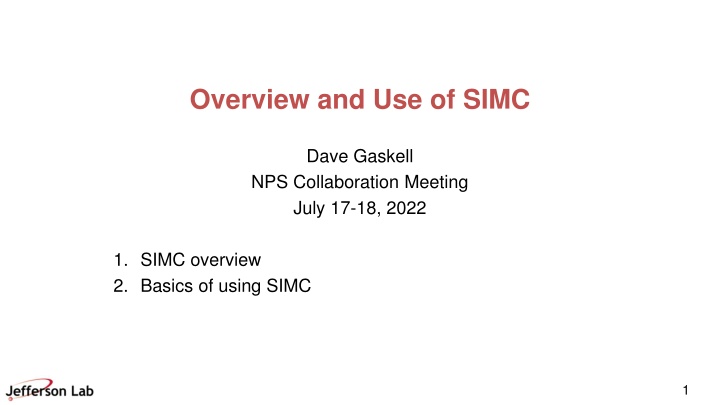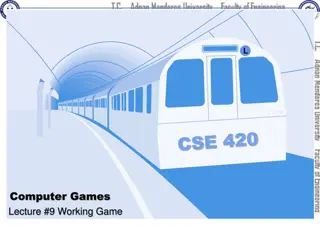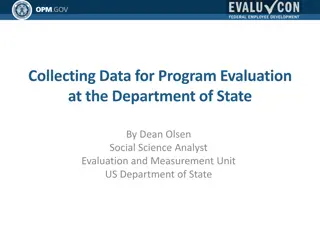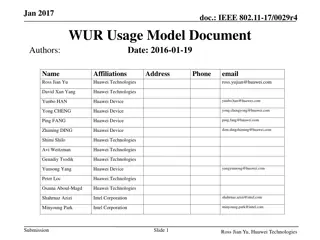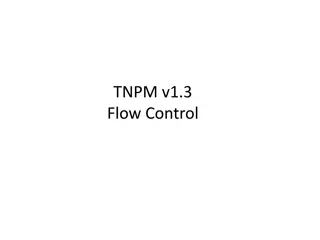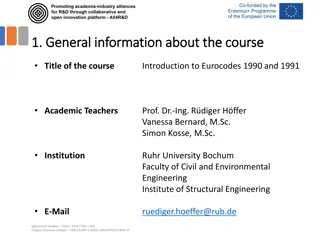SIMC Overview and Usage Essentials
SIMC, the standard Monte Carlo for coincidence reactions, offers features such as optics, aperture checking, and simulations of various spectrometers. This tool is not a full detector response simulator like GEANT and focuses on specific processes for spectrometer analysis. Learn how to initialize, generate events, handle physics processes, and reconstruct results in this comprehensive guide.
Download Presentation

Please find below an Image/Link to download the presentation.
The content on the website is provided AS IS for your information and personal use only. It may not be sold, licensed, or shared on other websites without obtaining consent from the author.If you encounter any issues during the download, it is possible that the publisher has removed the file from their server.
You are allowed to download the files provided on this website for personal or commercial use, subject to the condition that they are used lawfully. All files are the property of their respective owners.
The content on the website is provided AS IS for your information and personal use only. It may not be sold, licensed, or shared on other websites without obtaining consent from the author.
E N D
Presentation Transcript
Overview and Use of SIMC Dave Gaskell NPS Collaboration Meeting July 17-18, 2022 1. SIMC overview 2. Basics of using SIMC 1
What is SIMC? SIMC is the standard Hall C Monte Carlo for coincidence reactions (similar to MCEEP) written in FORTRAN (now gfortran compatible ) Features: Optics (COSY) and aperture checking Monte Carlos of spectrometers [HMS, SOS, SHMS, HRS s, BigCal, ] Includes radiative effects, multiple scattering, ionization energy loss, particle decay Simple prescriptions available for FSIs, Coulomb Corrections, etc. Reactions implemented: 1. Elastic and quasielastic H(e,e p), A(e,e p) 2. Exclusive pion production H(e,e +)n, A(e,e +/-) [quasifree or coherent] 3. Kaon electroproduction H(e,e K+) , , A(e,e K+/-) 4. H(e,e +/-)X, D(e,e +/-)X [semi-inclusive] 5. H(e,e K+/-)X, D(e,e K+/-)X [semi-inclusive] 6. H(e,e + -)p, D(e,e + -) [diffractive ] 7. H(e,e 0)p, D(e,e 0)p/n, (e,e 0)X Peter s updates underway 2
What SIMC is NOT SIMC is NOT a full detector response simulation a la GEANT SIMC does NOT simulate a large class of processes simultaneously to generate backgrounds (like Pythia for example) SIMC is not a generic event generator processes are generated over a limited phase space with the specific purpose of being thrown into a spectrometer SIMC is not hard to modify if you want it to do something else (different cross section model, add new spectrometer, etc.) it is pretty easy to update + I can help 3
Overview Initialization Choose reaction, final state (if appropriate) Disable/enable implementation of (or correction for) raster, eloss Event generation Select vertex based on target size, position, raster size, beam spot size Determine energy, angle generation that will populate 100% of the acceptance (accounting for radiation, energy loss, ) Physics Processes Event-by-event multiple scattering, radiative corrections, particle decay, coulomb corrections Acceptance Can apply geometric cuts or spectrometer model. Default spec. models include target/spec. offsets, model of magnetic elements, apertures at front, back, middle of magnets, collimators, detector active area Event Reconstruction Tracks are fitted in the focal plane and reconstructed to the target. Apply (average) energy loss, fast raster corrections. Calculate physics quantities for Ntuple/Root tree 4
Example: Exclusive Pion Electroproduction Initialize limits: Generate vertex: Generate scattering kinematics: H(e,e ): Generate e, e, , , pe calculate p D(e,e ): Generate e, e, , , pe, , pN calculate p Modifications to kinematics: Follow particles: Apply cross section weighting (use model for free proton/neutron in -N center of mass) Simulate particle decay Decay the meson and follow the decay product(s) Calculate Normalization Factors: Bound nucleon momentum/direction 5
Spectrometer Models (HMS, SHMS, HRS ...) Magnetic elements simulated using COSY Real apertures collimators, vacuum pipes magnet apertures (front, middle, and back) Fiducial cuts for detectors (depends on analysis, trigger) Sequential transformations for magnetic elements, continuous drift for field free regions (important for decay) Reconstruct track Use smeared position at drift chamber Fit track at focal plane Reconstruct to target using matrix elements fit from MC data Can easily disable spectrometer, apply geometric cuts, add new spectrometer/detector (for example, NPS) 6
Getting SIMC https://github.com/JeffersonLab/simc_gfortran 7
SIMC Basics Compiling: just type make in the main directory Important directories infiles where the input files for your simulation live worksim SIMC event-by-event output (root trees) outfiles where the *.hist file lives need this for normfac util helper applications to generate output Helper applications SIMC default output is a FORTRAN binary file Helper applications in util directory convert to root trees or paw ntuple util/ntuple and util/root_tree must be compiled separately Choose appropriate Makefile (Makefile.rhel9 or Makefile.rhel7) 8
SIMC: structures derived types Long ago had to convert from structures to derived types type arm end type structure /double_arm/ structure /arm/ e real*8 end structure structure /arm2/ p real*8 end structure end structure sequence real*8 delta, yptar, xptar, z delta, yptar, xptar, z type arm2 sequence end type delta, yptar, xptar, z real*8 delta, yptar, xptar, z type double_arm sequence end type type(arm)::e type(arm2)::p Use as variables, like: recon.e.delta vertex.p.xptar Use as variables, like: recon%e%delta vertex%p%xptar 9
SIMC RHEL9/Alma9 updates: derived types in modules First try to transition to Alma9 all the derived types were broken After lots of googling found a helpful web page that described the problem Compilers can handle derived types in 2 different ways Name equivalence: two types are equal if they have the same name Index equivalence: each time a type is declared/defined, it s given a unique index, even if they have the same name! Old compiler used first option, new gfortran uses second How to fix/deal with this? Put the derived types in a module and load the module in each relevant subroutine All the derived types that were in structures.inc are now in modules.f MODULE structureModule ! Define some BASIC record structures and associated parameters ! ... generic cut --> initialized with MAX large and MIN small type cutstype sequence real*8 min, max end type cutstype In each relevant subroutine, added this statement: USE structureModule 10
SIMC Input File These parameters should not change much in general using_Eloss should always be on to simulate ionization energy loss, but correct_Eloss should be off since hcana does not apply a correction Don t change the radiation flags, except maybe one_tail might want to turn off proton radiation for neutral particles 12
Input File Notes Kinematics Units are in MeV No need to account for ionization energy loss that s in simulation Include synchrotron energy loss in beam energy (if relevant) If you find offsets to nominal kinematics in your analysis apply those to the SIMC kinematics will impact the model cross section calculation Make sure to include contraction of target cell at low temperatures in target information Target info mixes units, density in g/cm3, but thickness in mg/cm2 Generation volume: must be larger than nominal acceptance to get correct yield and cross sections. You can easily check in the *.hist file if the found values are too close to the generation limits Despite the names, targ%yoffset and targ%xoffset are beam position offsets 13
Running SIMC and Generating Output Create your input file: eep_example.inp run SIMC 14
Running SIMC and Generating Output Go to util/root_tree directory ./make_root_tree 15
Make some plots and get some yields Normalized yield by applying Weight from tree Includes cross section, radiative corrections, small jacobian What s this 0.161960E+07 thing? normfac from eep_example.hist file Includes target thickness, simulated charge, generation volume Also need to divide by number of events in tree Result from this simulation (with these cuts) was: Yield = 542.9 counts/mC 16
Reconstructed Quantities in SIMC Calculation of reconstructed quantities (W, x, Q2, etc.) may not match how these quantities are calculated in hcana Reconstruction was originally intended to match calculations in Hall C 6 GeV fortran analyzer Found to be a problem for H(e,e p) analysis for KaonLT/PionLT definitions of missing momentum components weren t even consistent Ideally, we should make calculations in simc match hcana In the short term, should use stand-alone scripts to make comparable output Richard Trotta has done this for H(e,e p) and exclusive Kaon production: https://github.com/trottar/simc_gfortran/tree/fall_2023_kaon_xsects/recon_hcana 17
Updates for NPS Peter B. has done most of the work needed to make SIMC work for NPS Adding event generation for exclusive and semi-inclusive 0is straightforward same as + and - Additional complication is decay of 0into 2 photons (extra subroutine) DVCS event generation same as exclusive mesons, just changing mass to zero! Physics models needed for cross sections: SIDIS 0 average of + and - Exclusive 0 Large W (>2 GeV): Average of + and -, removing pion pole contributions Low W (<2 GeV): MAID model NPS calorimeter can just be an aperture for checking acceptance. Simple resolution smearing can be added later if desired I m working on incorporating Peter s updates into the main branch on version on github 18
SIMC Summary SIMC is a pretty simple tool in many ways, but powerful If full GEANT4 simulations are needed (e.g. for NPS) SIMC can be combined with those simulations SBS is doing this for d(e,e N) simulations Main drawback is that it s fortran Modern cross section models are usually in C++, etc. Easy work-around is to use look-up tables Peter has done this for the MAID model of pion electroproduction for example Peter has already implemented many of the needed updates, integration underway 19
